GC-ESK is a field-installed end seal kit to terminate 120v and 240v self-regulating heating cables after the cable has been installed in position. This kit includes materials for one GlowCap™ End Seal. Works for cables between 11-13mm wide.
$24.95 Original price was: $24.95.$22.95Current price is: $22.95.
31 in stock

It’s a common question that the GlowCap™ End Seal Kit was designed to answer from a distance. If the green indicator light is on, your cable is working. Installing the GlowCap™ End Seal kit on self-regulating heat cable takes about five minutes total. The kit includes a 12” section of 6 watt HeatTapePro™ Self-Regulating Heat Cable that is factory terminated with a GlowCap™, which is an injection molded body with an embedded 100,000 hour UL-Listed LED. The other end of the assembly is prepared and ready to be crimped onto the stripped end of any 10-13mm self-regulating heat cable.
The GC-ESK increases system reliability significantly because cable function can be verified in seconds with a quick glance at the GlowCap™. This is particularly helpful on cable systems that are inaccessible, such as on high locations
“Heat Tape Pro did exactly what I needed it to do. Now I don’t have to worry about water leaking into my house, because I can tell when it’s working by the little light on the end of the cable.”
-Michael P.
Amazon Customer
“This heat tape works as advertised. It was delivered to me fast, and although it’s a little complicated to install, the documentation is good..”
-Shaun D.
Radiant Solutions Customer
“I install thousands of feet of heat tape every year. This is the best stuff I’ve found to protect my customers homes and give them the piece of mind they need.”
-Patrick B.
Professional Installer
Radiant solutions has developed several accessories and installation components that work well for flat and low-pitch roofs. Installing heat tape on a flat roof often requires more unique considerations than standard serpentine patterns used on pitched roofs.
Check out our Case Studies for examples of Heat Tape installations, including information on flat roofs.
Also refer to the Heat Tape Pro Product Manual for information on flat roof installations of heat tape.
Including a thermostatic heat tape switch or controller in your installation will cut power to your heat tape in times it is not needed. This will lessen your environmental footprint and save you money.
Savings will always depend on the weather and how often you have temperatures above the threshold that the switch turns on your heat cable. In most situations where heat cable is needed, savings will offset the cost of the ThermaCord and then some.
Heat Tape Pro and Pipe Freeze Pro are offered in many lengths from 6-foot up to 150-foot. These products are not designed to be modified, so you should pick the length you need and work with that length. These cables should not be altered and doing so would void any warranty on the product.
We offer heat tape on spools from 250-foot to 1000-foot. These spools are designed to be cut to length, made into multiple cables, etc. Heat Tape on spools needs to be hard-wired into a junction box, or have a power connection plug-in manually added to it for use. It also requires ends to be properly sealed and terminated. When working with Heat Tape on spools, a Licensed Electrician should be utilized to assure proper wiring per regional codes and standards.
We are building a hand guide to identify what kind of roof you have and find the clips that can/should be used with that roof-type.
View the Guide Explaining What Clips You Need Here
We have a guide on How to Measure for Purchasing Heat Tape that will help you. Once you have your measurements, you can find our Heat Tape Calculator here.
We have a calculated rate based on the product in your cart if you choose to ship to Canada or Alaska.
More can be found here.
Radiant Solutions products, including Ice Dam Prevention products such as Heat Tape Pro and Pipe freeze Prevention products like Pipe Freeze Pro can be purchase here at this website or at Amazon.com.
This includes, but is not limited to:
The type of roof you have determines the roof clips and accessories needed. Check out our Heat Tape Installation Accessories.
See Below
Measuring is not difficult and you can make measurements without going up on your roof or using a ladder if you err on the side of overestimating the distances. Here’s Radiant Solutions Guide to Measuring for Heat Tape, which gives a detailed overview of measuring and some tips and resources, if you think you need it.
Once you have your measurements, you can use our Heat Tape Calculator to help you determine the length of Heat Tape Pro you need, the number of Heat Tape Clips you’ll need, and misc. product considerations.
Check out our full list of Frequently Asked Questions on our FAQ Page.
Take a Look at Our Heat Tape Installation Case Studies
Learn a Bit about Ice Dams and How & Why they Form
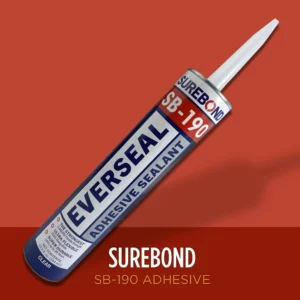
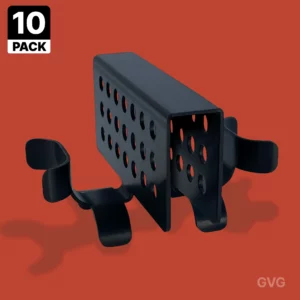
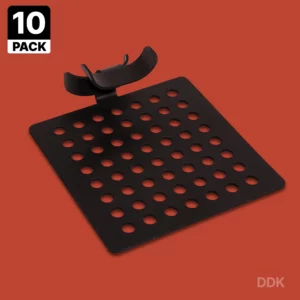
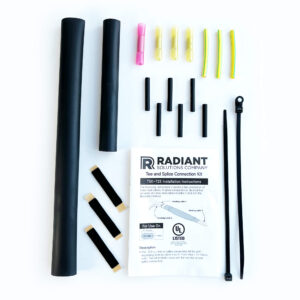
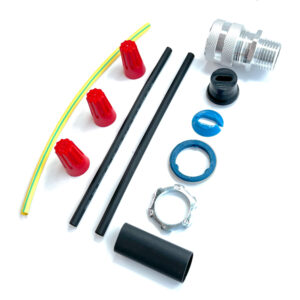
Find heat tape products & accessories for ice dam prevention and pipe freeze protection.
We may be able to help connect you with a Radiant Solutions Heat Tape installer in your area.
And Product Dimensions
Understand the problems that our products solve and the advantage Radiant Solutions has over our competitors.
Demand is high across the U.S. & installers are needed!
128-Bit encrypted connection
We’re here to help. We are a 35 year old, family-owned, American company who loves to hear from our customers.